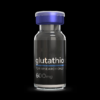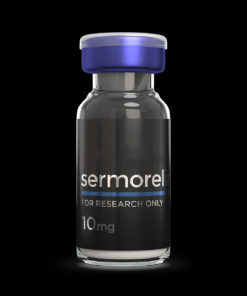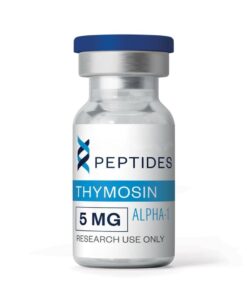Buy LL-37 Peptide Online
$130.00
LL-37 is a human-derived antimicrobial peptide from the cathelicidin family, renowned for its broad-spectrum activity against bacteria, viruses, and fungi. Beyond its pathogen-fighting capabilities, LL-37 plays a pivotal role in modulating immune responses, promoting wound healing, and supporting skin health.
LL-37: Pioneering Antimicrobial Peptide for Research
Advance Your Immunology Studies with LL-37
LL-37
LL-37, a cathelicidin-derived antimicrobial peptide, has emerged as a crucial focus in immunology and microbiology research. This multifunctional peptide offers exciting possibilities for studying innate immune responses and novel antimicrobial strategies.
LL-37 Specifications:
- Sequence: LLGDFFRKSKEKIGKEFKRIVQRIKDFLRNLVPRTES
- Molecular Weight: 4493.33 g/mol
- Purity: >95%
- Available in 10mg vials
Research Applications:
- Antimicrobial mechanism studies
- Innate immunity investigations
- Wound healing research
- Anti-biofilm activity analysis
How to Buy LL-37 Online
Acquiring high-quality LL-37 for your research is straightforward:
- Visit our LL-37 product page
- Select the 10mg option
- Proceed through our secure checkout process.
Why Source LL-37 From Us?
- Rigorous quality control ensures consistent purity
- Comprehensive documentation, including certificates of analysis
- Competitive pricing for research budgets
- Prompt, discreet shipping to research facilities worldwide
Expand Your Research Horizons
Incorporate LL-37 into your studies to explore its diverse biological activities. Whether you’re investigating antimicrobial resistance, wound healing processes, or immune modulation, LL-37 offers a versatile tool for cutting-edge research. To buy LL-37 10mg or inquire about bulk orders, please contact our dedicated research support team. We’re committed to supporting your groundbreaking work in immunology and microbiology. Important: LL-37 is intended for research use only. Not for diagnostic, therapeutic, or human use. Elevate your antimicrobial peptide research – purchase LL-37 through our trusted platform today.
LL-37 Peptide: Frequently Asked Questions (FAQs)
1. What is LL-37?
LL-37 is the only human cathelicidin antimicrobial peptide, derived from the precursor protein hCAP18. It plays a crucial role in the innate immune system by exhibiting broad-spectrum antimicrobial activity against bacteria, viruses, and fungi. Additionally, LL-37 is involved in modulating immune responses and promoting wound healing.
2. How does LL-37 function in the immune system?
LL-37 contributes to host defense by:
-
Disrupting microbial membranes, leading to pathogen death.
-
Neutralizing bacterial endotoxins.
-
Modulating inflammatory responses by interacting with immune receptors.
-
Promoting chemotaxis of immune cells to infection sites.
3. What are the potential therapeutic applications of LL-37?
Due to its antimicrobial and immunomodulatory properties, LL-37 is being explored for therapeutic use in:
-
Treating antibiotic-resistant infections.
-
Enhancing wound healing and tissue regeneration.
-
Managing inflammatory skin conditions like psoriasis and eczema.
-
Potentially modulating immune responses in autoimmune diseases.
4. Are there any known side effects or risks associated with LL-37?
While LL-37 has beneficial roles, its overexpression or dysregulation may contribute to:
-
Chronic inflammatory conditions.
-
Autoimmune diseases, such as systemic lupus erythematosus and rheumatoid arthritis.
However, there are currently no reported cases of exogenous LL-37 administration causing such diseases.
5. How is LL-37 production regulated in the body?
LL-37 expression is upregulated by:
-
Vitamin D: Enhances LL-37 gene expression in various cells.
-
Toll-like receptor activation: Stimulates LL-37 production in response to microbial components.
6. Is LL-37 available for clinical use?
Currently, LL-37 is primarily utilized in research settings. Clinical applications are under investigation, and it is not yet approved for widespread therapeutic use.
7. Can LL-37 be used as an alternative to traditional antibiotics?
LL-37 exhibits antimicrobial activity against various pathogens, including antibiotic-resistant strains. However, its clinical efficacy and safety as an antibiotic alternative are still under research.
8. How does LL-37 contribute to wound healing?
LL-37 promotes wound healing by:
-
Stimulating cell proliferation and migration.
-
Enhancing angiogenesis (formation of new blood vessels).
-
Modulating inflammatory responses to facilitate tissue repair.
9. Are there synthetic analogs of LL-37 being developed?
Yes, researchers are developing synthetic derivatives of LL-37 with enhanced stability and antimicrobial activity, aiming to overcome limitations associated with natural peptides.
10. Where can I find more information about LL-37?
For detailed scientific information, you can refer to: PeptideNationUSA
Be the first to review “Buy LL-37 Peptide Online” Cancel reply
Related products
Peptide
Peptide
Peptide
Peptide
Peptide
Peptide
Peptide
Peptide















Reviews
There are no reviews yet.